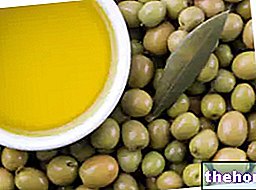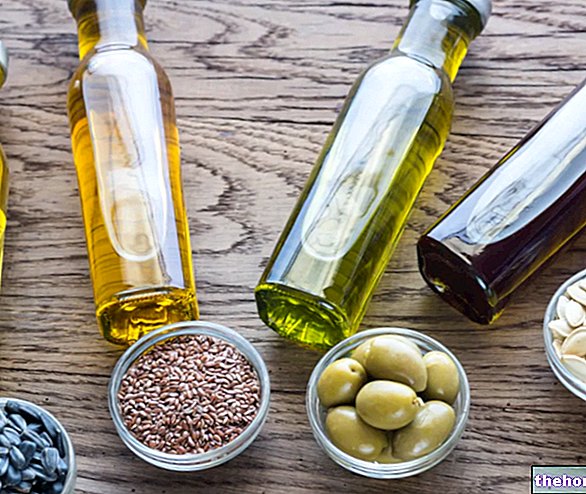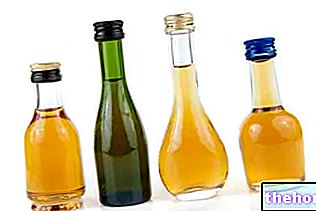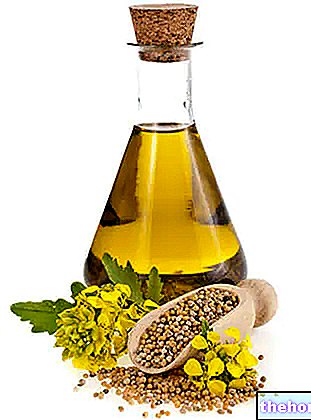Nutritional properties
Flax (Linum usitatissimum) is an annual herbaceous plant that grows spontaneously, but which can also be cultivated, as the Egyptians, Jews and Phoenicians had already learned to do to obtain precious textile fibers.

Thanks to their emollient and protective properties, flax seeds can also be used in the form of an infusion to calm internal (digestive tract, urinary tract) or external (skin) inflammations.
In the literature there is some preliminary evidence on the possible anticancer properties of flax seeds, with reference to prostate cancer; these properties would be attributable to the generous content of lignans. Although the evidence is weak and conflicting, there is still evidence that omega-3 fatty acids, abundant in flax seeds, positively modulate the inflammatory response and immune system activity; this could translate into a protective role for prostate health. The conditional is clearly obligatory, as the actual extent of this benefit remains uncertain.
Flax seeds also boast an excellent content of minerals, proteins (20-25%) and lipids (30-40%). The latter are rich in triglycerides, consisting of:
- α-linolenic acid, progenitor of ω3 (> 50%)
- linoleic acid progenitor of ω6 (25%)
- oleic acid, monounsaturated characteristic of olive oil (10-18%)
- saturated fatty acids (5-10%)
Nutritional values
Nutritional composition for 100 grams of Linseed

The Nutritional Values are taken from the US Department of Agriculture database. The percentages shown in brackets indicate approximately the coverage of the US Recommended Daily Intake (DRI).
Linseed oil
The oil of the same name can be obtained from flax seeds, consisting mainly of triglycerides rich in essential polyunsaturated fatty acids (ω3 and ω6 or vitamin F).
The supply of these nutrients must necessarily come from the diet, since the organism is not able to produce them starting from other lipid substrates. It should also be said that the use of linseed oil is particularly useful for rebalancing the ratio between ω3 and ω6, which due to the modern eating style is often unbalanced in favor of the latter. In this regard, linseed oil is certainly better than olive oil and traditional seed oils, but less effective than fish oils, because it is low in eicosapentaenoic acid (EPA) and docosahexaenoic acid (DHA).
An adequate intake of undifferentiated alpha-linolenic acid, through the regular consumption of linseed oil, is however effective in protecting the body from cardiovascular diseases and some inflammatory-neurodegenerative diseases.
The antioxidant activity is enhanced by the moderate content of vitamin E, however insufficient to prevent rancidity to which linseed oil is particularly subject.
There is also a good presence of lecithin, a set of phospholipids necessary for the proper functioning of the nervous system and the brain.
To this oil are also ascribed anti-haemorrhoidal, anticolytic and regulating properties on intestinal function.
To know more:
Linseed Oil as a Food: Extraction, Properties and Warnings for Use »
Linseed Oil as a Supplement: Benefits and Properties "
Method of use and conservation
Two teaspoons of linseed oil a day are able to satisfy, by themselves, the daily requirement of alpha-linolenic acid (ω3). To be better assimilated and processed in their derivatives, the polyunsaturated fatty acids present in linseed oil should preferably be taken in meals low in animal fats and simple sugars. This food can therefore be used to season a light meal based on vegetables and white meat It is important not to exceed the recommended intake doses. Only by combining it with traditional lipid sources is it possible to satisfy the need for all fatty acids, including saturated ones, which at the right doses are however essential for "optimal physical efficiency. The same goes for cholesterol."
of cod
* LNA = undifferentiated alpha-linolenic acid
SOURCE: "Essential Fatty Acids in Food" was compiled based on data provided by the US Department of Agriculture
The richness of polyunsaturated fatty acids, however, has the defect of amplifying the problems of shelf life; The "linseed oil, in fact, goes rancid quickly and must" be obtained by cold pressing, since these fatty acids are easily altered with high temperatures (for this reason it must always be used raw, never for frying or fried). Even the crushed seeds must be used within a few days to avoid the aforementioned phenomena of rancidity.
The oxidation, which would make this food unsuitable for dietary use, is however exploited in the industrial field. In fact, when exposed to air, linseed oil forms a solid brown mass, which is used in the preparation of varnishes and paints.
Linseed oil is generally sold in small bottles (250 or 500 ml), has a reduced shelf life and must necessarily be consumed within one month of opening. To protect it from light and heat, it must be stored in well opaque bottles. sealed, and placed in a cool place (in the refrigerator after opening, with the cap tightly closed). On the market there are also linseed oil capsules or pearls which, however, provide a modest quantity of essential fatty acids, unless several capsules are consumed per day (equivalent to a dose of at least 3 grams / day of linseed oil).
Flax Seeds: Whole or Ground?
Many experts or presumed such recommend the consumption of ground flax seeds, discouraging the ingestion of whole flax seeds; the latter, in fact, would be poorly digestible, with the risk of excreting a large part of the dose taken with the faeces, without absorbing the nutritional principles.

Whole Linseed (Above) and Ground (Below)
Although this recommendation is quite widespread, there are no important experiments in the literature to support this hypothesis. On the other hand, a study seems to confirm that: the fatty acids and lignans in NON-GROUND seeds taken through bars would ANYWAY be absorbed and metabolized.
To clarify the topic, we could say that a lot depends on the purposes for which the flax seeds are taken:
- if the purpose is to regularize the intestine and reduce the absorption of dietary fats, flax seeds can be taken both whole (preferably) and ground, with the foresight to accompany them with generous doses of water to promote swelling of the mucilage;
- if the purpose is to increase the intake of omega-3 (alpha linolenic acid) it is preferable to take ground flax seeds; in this regard, remember that, once ground, the product tends to perish quite quickly, due to the "oxidation of omega-3s (rancidity). Therefore, whenever possible, it is preferable to grind the whole flax seeds in person, keeping the product in the refrigerator, in tightly closed containers for no more than a few days.
Variety
There are two main varieties of flax seeds: yellow (called golden) and brown. Most varieties have similar nutritional characteristics, including similar concentrations of omega three.

Flax seeds in the kitchen
In the kitchen, flax seeds can be added as desired to bread and savory doughs (pizza, focaccia), salads, sweet doughs (oven pies, muffins, etc.), to improve their nutritional and taste properties (give a touch of crunchiness to the recipe).
Flax seeds and the flour obtained from them are widely used in vegetarian and vegan cuisine, both for their nutritional virtues and for some technical characteristics. The excellent emulsifying properties of finely ground flax seeds make them an excellent egg substitute.
Recipes with Linseed »
Other Foods - Oils and Fats Peanut Butter Cocoa Butter Butter Greaves Wheat Germ Animal Fats Margarine Vegetable Cream Tropical Oils and Fats Frying Oils Vegetable Oils Peanut Oil Borage Oil Rapeseed Oil Krill Oil Poppy Seed Oil Seed Oil Pumpkin Avocado oil Hemp oil Safflower oil Coconut oil Cod liver oil Wheat germ oil Linseed oil Macadamia oil Corn oil Almond oil Hazelnut oil Walnut oil Olive oil Palm oil fish Rapeseed oil Rice oil Pomace oil Seed oil Soybean oil Grapeseed oil Extra virgin olive oil Sesame seeds and sesame oil Lard OTHER ARTICLES OILS AND FATS Categories Food Alcoholics Meat Cereals and derivatives Sweeteners Sweets Offal Fruit Dried fruit Milk and Derivatives Legumes Oils and Fats Fish and fishery products Salami Spices Vegetables Health recipes Appetizers Bread, Pizza and Brioche First courses Seconds pi acts Vegetables and Salads Sweets and Desserts Ice creams and sorbets Syrups, liqueurs and grappa Basic Preparations ---- In the Kitchen with leftovers Carnival recipes Christmas recipes Light diet recipes for Celiacs Recipes for Diabetics Recipes for Holidays Recipes for Valentine's Day Recipes for Vegetarians Protein Recipes Regional Recipes Vegan Recipes




























